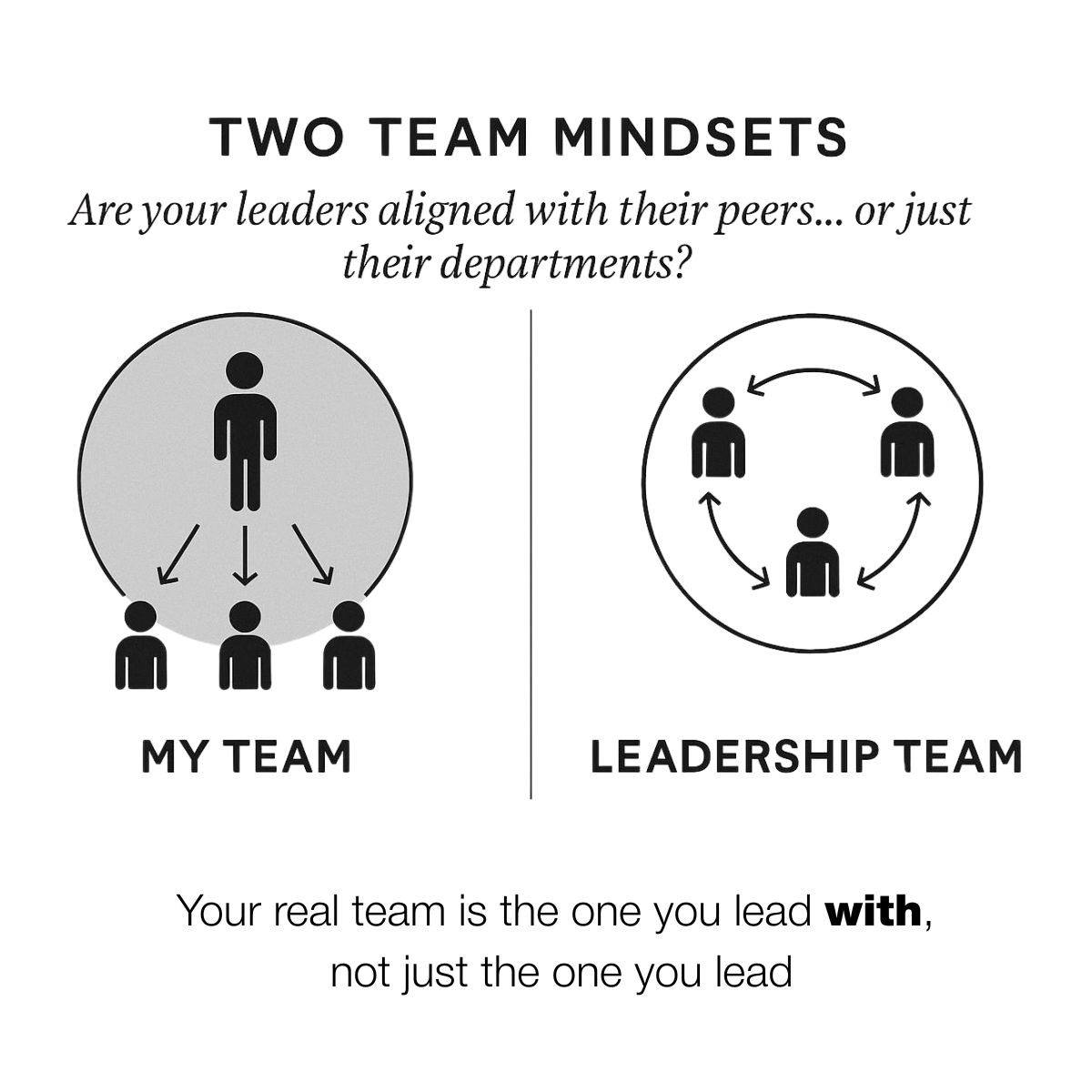The Simple Shift That Transforms Senior Teams
You’re surrounded by smart, experienced, capable leaders—yet something’s not quite right. Communication feels strained, priorities compete, and even simple collaboration is harder than it should be.
The potential is there. But the team just isn’t clicking.
Here’s one of the most common—and avoidable—mistakes we see in executive teams across Australia:
Most senior leaders don’t truly define the leadership team they’re part of.
Instead of seeing their leadership peers as their team, they default to thinking of their direct reports as “my team.”
And that mindset can quietly derail collaboration, clarity, and momentum across the business.
When Leaders Define “My Team” the Wrong Way
Imagine this: Your operations lead is focused on efficiency, your sales director is pushing hard for growth, and your marketing head is launching a campaign—all with good intentions. But if they’re not aligned, misfires are inevitable.
A classic example: Sales locks in a deal, but operations can’t deliver. Or marketing promotes a product that’s unavailable, causing customer service headaches.
These are more than just internal mix-ups. They’re signs of a deeper issue—a leadership team that’s not acting as a cohesive team structure, but rather as individual silos.
And when that happens, collaboration suffers, tensions rise, and performance plateaus.
Leadership Collaboration Starts with Redefining “Team”
Truly effective leadership begins when executives stop thinking department first and start thinking business first.
The best companies define the leadership team as the peers you sit beside at the executive table—not just the people you lead.
That’s when everything changes:
Decisions are made faster.
Resources are shared more wisely.
Teams stop pulling in different directions.
Leaders hold each other accountable.
A culture of shared team goals emerges.
In other words, leadership collaboration becomes the standard—and executive team clarity drives execution.
How to Create Alignment at the Top
If you want your leadership team to shift into a higher gear, here’s where to start:
Ask the real question: “Who do you consider your primary team?”
Explore the impact: How does that definition influence decisions, priorities, and behaviours?
Make the mindset shift explicit: Clarify that executive collaboration is not optional—it’s expected.
Create shared commitments: Build team alignment through consistent goals, aligned behaviours, and collective accountability.
This isn’t about abandoning loyalty to your function. It’s about upgrading your leadership identity—from siloed leader to collaborative executive.
Team Alignment in Australia Starts at the Top
We’ve worked with senior teams for over 30 years across industries in Australia. What we’ve seen is simple: when leadership teams align around a shared identity, clear goals, and collaboration, the ripple effect is powerful.
Team culture improves. Decision-making accelerates. And the business thrives.
Whether you’re a CEO looking to reset expectations, or part of an executive group that’s struggling to gel, now is the time to take action.
Let’s Talk About Your Leadership Team
If your executive team needs greater alignment, clearer direction, or a stronger sense of shared purpose, we can help.
📞 Call us on 1300 551 274
📧 Or email team@teamfocusplus.com
Let’s clarify your leadership team’s identity, build a truly cohesive team structure, and create the kind of collaboration that drives long-term success.
Because when senior leaders lead as one, the whole organisation follows.





